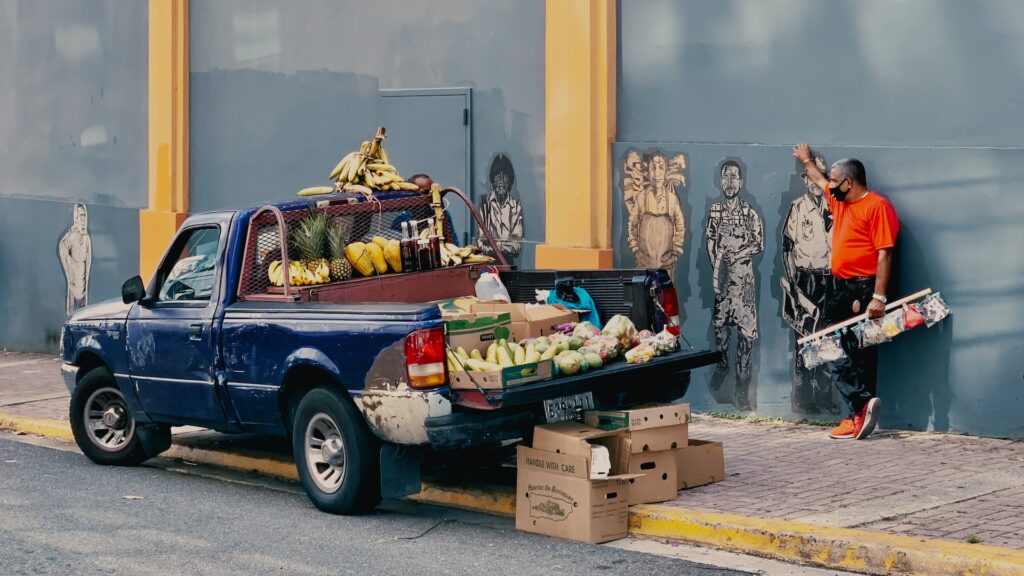As someone who’s spent a fair share of my life on the road, I’ve realized that one of the most crucial aspects of travel – especially when it comes to pickup trucks – is how well you prepare and secure your cargo. Ensuring everything is strapped down properly can mean the difference between a stress-free journey and an unexpected roadside disaster. So let’s get into it: pickup prep, focusing particularly on strapping techniques for safe travels.
It’s not just about throwing everything into the back and hoping for the best; there’s an art to packing your pickup. It involves considering weight distribution, recognizing which items need extra security, and mastering various strapping methods. From ratchet straps to bungee cords, we’ll explore these techniques in detail, helping you make informed decisions about what works best for your unique travel needs.
Remember, safety should always be paramount when preparing for a trip with your pickup truck. Taking time out to ensure everything is securely fastened may seem like a chore now, but trust me—it pays off in peace of mind on those long stretches of open road ahead.
Understanding Pickup Prep: An Overview

Alright, it’s time we dive into the world of pickup prep and strapping techniques for travel. I’m sure you’ve been there before – trying to load up your truck for a big move or a weekend camping trip, only to find that securing everything down is more challenging than you’d anticipated. And trust me, I’ve been there too.
Let’s start with the basics. What exactly is pickup prep? In essence, it’s all about preparing your vehicle for cargo transport. This includes everything from checking tire pressure and fuel levels to organizing your load in a way that maximizes space while ensuring stability during transit.
The heart of pickup prep lies in effective strapping techniques. You see, proper loading isn’t just about getting everything onto the bed of your truck—it’s also about making sure it stays put once you hit the road.
There are numerous ways to secure loads on trucks but some tried-and-true methods stand out above the rest:
- The use of ratchet straps: These powerful tools can generate significant tension, holding items firmly in place.
- Bungee cords: While not as strong as ratchet straps, they’re great for lighter loads.
- Chains and binders: Ideal for super-heavy objects like machinery or large furniture pieces.
Remember this golden rule: If it can wiggle, it can fall off. So don’t be stingy with those straps!
Safety should always be at the forefront when carrying out pickup prep tasks. Improperly secured cargo can lead to accidents on the road—not just damaging your belongings but potentially causing harm to others as well.
Pickup prep isn’t rocket science but requires attention and care—I assure you that mastering these techniques will make your travels smoother and safer! It’s time we strap in (pun intended) and navigate through this journey together!
Get more travel inspiration:
- Visiting The Indigenous White Karen Hill Tribes in Thailand
- Exploring the Big Apple: A 3-Day Itinerary for First-Time Visitors
- 7 Things to Do in Byron Bay, the Hippie Paradise in Australia
- Which Camper is Best For The Nomad’s Life?
Importance of Proper Strapping Techniques
When it comes to preparing your pickup for travel, I can’t stress enough the importance of proper strapping techniques. It’s not just about making sure your stuff doesn’t fly off while you’re barreling down the highway – although that’s certainly a key concern. Proper strapping also plays a crucial role in maintaining the condition and longevity of both your cargo and your vehicle.
Let me paint you a picture: You’ve got a truck bed loaded with camping gear, coolers, and maybe even a couple of bikes for an outdoor adventure. Now, if things aren’t strapped down right, every single bump on the road becomes an opportunity for disaster. Loose items could shift or topple over, potentially damaging other items in the process.
But it’s not only about preventing damage during transit. Securing loads correctly is also vital when it comes to unloading at your destination. Ever tried lifting something heavy that’s been improperly secured? It’s like wrestling with an angry octopus – all awkward angles and unexpected shifts in weight.
Additionally, there are legal implications to consider as well. In many states, drivers are legally required to secure their loads properly. Failure to do so can result in hefty fines or even loss of driving privileges.
So whether we’re talking potential damage, personal safety concerns or legal responsibilities – proper strapping techniques are absolutely crucial when prepping your pickup for travel:
- They keep cargo secure during transit.
- They protect items from damage.
- They ensure safe loading and unloading.
- They help avoid legal penalties.
In short: don’t underestimate the importance of securing your load correctly! It might take a little extra time and effort up front but trust me – it’ll save you plenty more down the line!
Different Types of Straps and Their Uses
I’ve been around the block a time or two when it comes to strapping gear for travel. I can tell you, it’s not as simple as throwing your stuff in the back of the truck and hitting the road. There’s an art to it – one that involves understanding different types of straps and their uses.
One of the most common types you’ll come across is ratchet straps. These gems are perfect for securing heavy loads thanks to their unique tightening mechanism. You just thread the strap through a ratchet, tighten it until secure, and then lock it into place. No need to worry about your gear bouncing around on those bumpy country roads!
Tie down straps are another staple in my pickup prep kit. They’re versatile champs, useful for everything from securing surfboards on roof racks to tying down camping gear in truck beds. Just loop them over your load, feed through a buckle and pull tight – voila!
Cam buckle straps work a bit differently but they’re equally handy when it comes to traveling with gear in tow. They operate using a cam mechanism that allows you to pull your strap tight without risk of over-tightening or damaging sensitive items like bikes or kayaks.
But let’s not forget about bungee cords! While these aren’t technically ‘straps’, they do play an essential role in keeping things stable during transit—especially smaller items that might be prone to shifting.
Finally, there’s a rope – perhaps one of the oldest forms of securing loads yet still relevant today due to its simplicity and versatility.
- Ratchet Straps: Best for heavy loads
- Tie Down Straps: Versatile use from surfboards to camping gear
- Cam Buckle Straps: Ideal for sensitive equipment like bikes or kayaks
- Bungee Cords: Excellent for stabilizing smaller items
- Rope: Simple yet versatile
Each type has its own strengths and is ideal for different situations. So next time you’re packing up your pickup, remember – the right strap can make all the difference in protecting your gear (and your sanity) on the road!
Step-by-Step Guide to Securing Your Load

Hitting the road with a load in your pickup requires more than just tossing your gear into the back. I’m here to give you a step-by-step guide on how to secure your load properly, ensuring safe travels no matter where you’re headed.
First things first, consider what kind of strapping system is best for your needs. Ratchet straps are the go-to choice for many due to their strength and reliability. They’re easy to tighten and release, making them user-friendly even for beginners. Tie-down straps with cam buckles can also be an excellent solution if you’re dealing with lighter loads. They offer great adjustability but may not hold up against heavy-duty applications.
Next up, spread out all items evenly across the bed of your truck before strapping anything down. An uneven load can throw off your vehicle’s balance, affecting its handling and potentially causing dangerous situations on the road.
After distributing the load evenly in your truck bed, it’s time to start securing it down. Start from one end of the truck bed and work your way towards the other end. Attach one hook of your strap to a secure point on your vehicle (like a tie-down point or cargo hook), then run it over or through part of your load before attaching it securely at another point on the opposite side. This ‘over-and-back’ technique helps prevent any shift during transit.
It’s essential that every strap is tight – really tight! Loose straps can lead to shifting loads which are unsafe and potentially damaging. And remember: re-checking doesn’t hurt! Always double-check each strap after tightening them all down.
Lastly, keep in mind that some states have specific laws regarding transporting unsecured loads – so don’t forget about legal considerations too!
Here’s a quick recap:
- Choose the appropriate strapping system (e.g., ratchet straps or cam buckle straps)
- Spread out items evenly across the truck bed
- Start securing from one end to the other using an ‘over-and-back’ technique
- Tighten every strap and double-check them
- Consider legal requirements in your state
By following these steps, you’ll ensure a safe and secure journey for both your cargo and yourself. Keep on truckin’!
Safety Measures When Using Strapping Techniques
I can’t stress enough the importance of safety when it comes to strapping techniques for travel. Securing your gear isn’t just about ensuring things don’t go flying at the first bump in the road. It’s also about taking precautions to prevent injuries and damage during your travels.
First off, let’s dive into a major point: the use of quality products. You might be tempted to skimp on this part, but trust me, using subpar straps or fasteners is simply not worth it. Not only could they break under pressure, potentially causing accidents, but they’re more likely to wear out quickly and require frequent replacements.
Now here’s something you may not think much about – proper tensioning. It might seem like pulling your straps as tight as possible is the way to go, but there’s such a thing as too tight! Over-tightening can cause undue stress on both your gear and the straps themselves, leading to possible failures down the line.
Another key measure is evenly distributing weight across all strappings. By doing so, you’ll minimize strain on any one strap and ensure that each piece of equipment has ample support.
- Quality Materials
- Proper Tensioning
- Even Weight Distribution
Don’t forget also checking regularly for wear and tear – no strap lasts forever! Regular inspection helps catch potential problems before they become bigger issues.
Lastly, always double-check everything after securing your load before hitting the road. A little extra time spent rechecking could save you from troubles later on!
Stay safe out there folks – happy traveling!
Mistakes to Avoid During Pickup Preparation
I’ve seen it all too often: folks loading their pickups for an adventure, only to discover halfway through their journey that they’ve made crucial errors in the prep process. It’s frustrating, sure, but more importantly, it can lead to serious consequences. Here are a few common mistakes I’d advise you to avoid.
Overloading is one of the most frequent missteps I’ve observed. Your truck bed may seem like a never-ending pit of space, but there’s a limit to what it can handle safely. Payload capacity varies from truck to truck – check your manual or consult with your manufacturer if you’re unsure about yours. For instance:
| Truck Model | Payload Capacity |
| Ford F-150 | 2,309 lbs |
| RAM 1500 | 2,300 lbs |
| Chevy Silverado | 2,280 lbs |
Another common error? Not securing your load properly. When items aren’t strapped down securely enough they become potential projectiles – dangerous and potentially damaging for both you and other road users.
I also recommend doing a thorough check of your cargo straps before setting off. They might look tough and indestructible but trust me; over time they can weaken from wear and tear or UV damage. A broken strap could mean lost or damaged goods – not exactly an ideal situation when you’re miles away from home.
Finally, poor weight distribution is another mistake many pickup owners make when preparing for travel. An unevenly loaded pickup can affect steering control and overall vehicle stability which increases the risk of accidents on the road.
So remember:
- Don’t overload
- Secure your load properly
- Inspect your cargo straps
- Distribute weight evenly
Avoid these common pitfalls during pickup preparation and ensure safer travels on every road trip.
Case Study: Effective Strapping Techniques in Practice
I’ve got a first-hand experience that perfectly illustrates the importance of proper strapping techniques. Let’s take a trip down memory lane, back to my cross-country road trip last summer. My pickup was loaded with everything from camping gear to kitchen utensils, and I knew securing it all would be crucial.
My primary tool for this job? Ratchet straps. These nifty devices provided the perfect balance of strength and flexibility. An interesting fact – ratchet straps can hold up to 5000 pounds! That’s almost twice as heavy as an average car.
| Ratchet Straps | |
| Strength (pounds) | Up to 5000 |
Here’s how I put those ratchet straps into use:
- First up, I laid out all my items, grouping them by size and weight.
- Next, heavier items went on the bottom while lighter ones were placed on top.
- Then came the real test – strapping it all down properly. I formed an ‘X’ pattern with the straps over each group of items. This ensured that not only were they held down vertically but also secured laterally against any side-to-side movement.
The result? A securely packed pickup truck ready for a long journey ahead! But don’t just take my word for it – let me share some figures here.
Throughout the entire 2000-mile journey, not once did any item shift or fall off. Moreover, unpacking was a breeze since nothing had moved around chaotically during transit.
In short, proper strapping techniques are more than just about safety; they’re about ensuring your travel experience remains hassle-free. This is why next time you’re prepping for travel in your pickup, remember: strap right and strap tight!
Conclusion: Mastering Travel Preparations with Proper Strapping
After a deep dive into the world of pickup prep and strapping techniques, it’s clear that proper strapping plays a crucial role in travel preparations. It not only ensures the safety of your items but also provides peace of mind during transit.
Firstly, we’ve learned that choosing the right straps is key. My advice? Opt for high-quality ratchet straps or cam buckle straps. They’re reliable, sturdy, and able to withstand tough conditions.
Next up is mastering the technique of secure strapping. Remember to evenly distribute weight across your load and always double-check strap tension. This way you’ll prevent any unwanted movement or damage during your travels.
Now let’s talk about maintenance – it’s essential for maximizing the lifespan of your straps. Regular checks for wear and tear and proper storage can extend their usability and save money in the long run.
Here are some key takeaways from our discussion:
- Choose quality over cost when selecting your straps.
- Learn how to correctly distribute weight across your vehicle.
- Regular maintenance will keep your straps in top condition.
Lastly, I want to stress one thing – practice makes perfect! The more you use these techniques, the more efficient you’ll become at securing loads for travel.
So there you have it! With adequate preparation and knowledge about proper strapping techniques, I believe anyone can master travel preparations. Here’s wishing all my readers safe travels on their future journeys!



